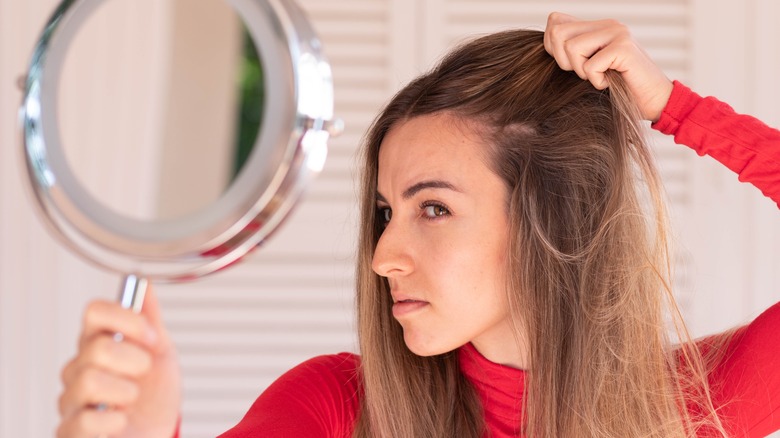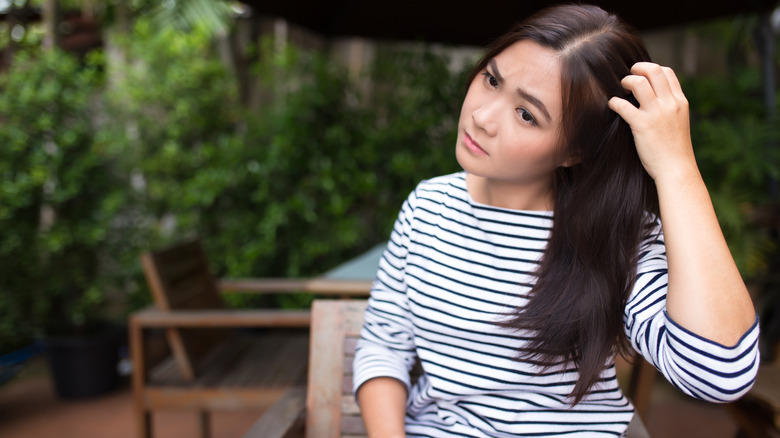Slicked-Back Ponytails Look Amazing, But They May Cause Major Hair Damage
Getting the perfectly coiffed ponytail that has no stray hairs or loose ends hanging out is what dreams are made of, especially for ponytail lovers. However, it can be a nightmare for your hair.
Long hairstyles don't have to be high maintenance, after all, there are many benefits of putting your hair up and heading out of the house. For starters, it can quickly mask a bad hair day due to bad weather or when you're overdue for a washing. From a purely practical standpoint, getting your hair off of your shoulders and neck is a godsend when it's hot and sticky or if you're playing sports, at the gym, cleaning, or bending down while doing an activity. These types of ponytails are usually assembled quickly and usually not too tight, so they likely don't pose a problem for your hair.
However, the super tight, slicked-back ponytail that is more of a fashion statement is what can damage hair. Here's why you may want to rethink doing this neat style a little too often.
Regular tight ponytails can cause traction alopecia
Tight ponytails can cause hair follicles to become so compromised from repeated pulling and tugging that they can no longer grow. "Many hairstyles can cause hair loss; however, the main ones are tight ponytails and buns, tight braids, and extensions," Senior Hair Transplant Surgeon Dr. Daniel Ness told Metro. "Tight buns and ponytails can often pull on the hair directly from the root, causing the follicle to become damaged and then scarred. This scarring will eventually halt hair production."
This type of hair loss that is caused by pulling and tugging of the hair is referred to as traction alopecia. Besides slicked-back ponytails, it can also be caused by tight braids. Ness noted that donning this hairstyle every once in a while should be ok, but you rethink doing it regularly. If you are continuously pulling your hair tight, those follicles will not recover and you might start noticing signs of alopecia.
Symptoms of traction alopecia
The first signs of traction alopecia are typically "fine red bumps and loss of hair — particularly broken hairs around the forehead," as board-certified dermatologist Dr. Corey L. Hartman explained to Allure. Hartman said you might also notice hair loss that looks patchy, itchy skin, and an overall sensitivity along the hairline or in spots where hair is pulled.
Luckily, if you can recognize early signs of traction alopecia and then style your hair differently every day, you may be able to correct the problem. Hair can often grow back, though it can take several months. With proper treatment, you can prevent further damage.
For severe cases, a doctor can help treat the issue using steroid injections and prescription medication. "You may also be written a prescription for a topical steroid treatment to apply at home to reduce inflammation," Dr. Hartman noted. "Products with topical minoxidil can help regrow hair. The ingredient shortens the resting phase of the hair growth cycle so they grow faster and stronger." For mild cases, you can also pick up hair growth products at the pharmacy which contain minoxidil, such as Rogaine.


